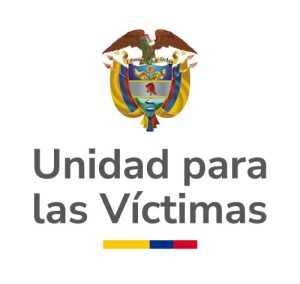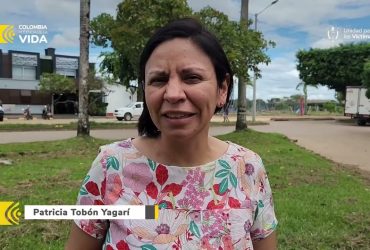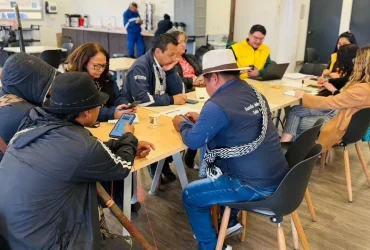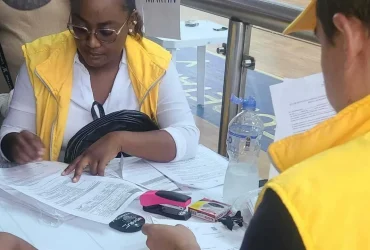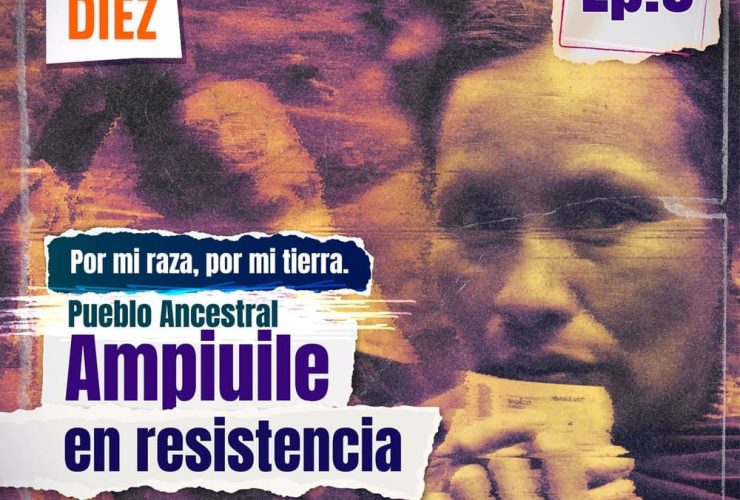By Cesar A. Marin
Two days before the tragedy and due to the distress experienced in the region, Maria Pascuala, her five daughters and her husband set out to Pogue in a boat, a Bojaya District where she was born and where she lived during her early age before going to Bellavista.
However, before leaving, Maria Pascuala asked her parents to leave with her, to which Emiliano replied: “I haven’t done anything to anyone and that’s why I’m not leaving.” For her part, Mrs. Ana Cecilia said, as if casting premonitory words: “I’ll die here. If your dad doesn’t want to leave, I’ll stay with him.”
The sad story is by Maria Pascuala Palacios, who remembers that early on May 1st, 2002, some shots were heard. When they verified that guerrillas and paramilitaries were near the town, the inhabitants of Bellavista (the former municipal seat of Bojaya, Choco) took shelter in the church, “because it was one of the few constructions made out of concrete and, due to our beliefs, it was God’s house, and nothing was going to happen there.”
A day later the Bojaya Massacre occurred, after a cylinder bomb launched by the Farc exploded in the Church of San Pablo Apostol. This happened amid combats they sustained with paramilitaries from the Elmer Cardenas Block and the explosion killed 83 people; one hundred more were injured.
That May 2nd was an announced disaster from April’s last days. Rumors about both armed groups presence spread in the region near Bellavista, the place where the massacre happened.
On April 30th, the paramilitaries intercepted the guerrilla’s communications and, on May 1st at around 5:30 in the morning, the guerrilla killed paramilitary Commander “Camilo”, who was trying to reach Vigia del Fuerte (Antioquia’s municipality located on the opposite shore). At the same time, other guerrilla group arrived at the Pueblo Nuevo neighborhood in the northern part of Bellavista.
From there, the guerrilla fired at the paramilitaries, who were in a courtyard next to the church, where 400 people had taken shelter believing it would be a safe place. Another group of civilians hid in the house of the Augustinian sisters.
Anguish seized the day. They say that on May 1st night, there was a strange silence that was interrupted around dawn on May 2nd, when several of those who had taken refuge in the church, including the priest Antun Ramos, asked the paramilitaries to leave the place because they were using them as human shields, a request they didn’t want to follow. That day, without knowing it, the town’s church would keep the innocent’s blood in its chalice.
Around 10:30 in the morning, one of the four cylinder-bombs launched by the guerrilla exploded inside the church. Not even the Christ was saved. Several wounded were taken to the Augustinian nuns’ house for their basic medical knowledge. Others were transferred to Vigia del Fuerte in a procession led by Father Antun.
Being in Pogue, Maria Pascuala didn’t know about her relatives’ fate. Only until May 2nd afternoon, her uncle Maximo arrived and told her: “They ended Bellavista town.” And he confirmed that Emiliano and Maria Cecilia had passed away.
“Later I found out that my parents, my brothers Emerson, Baldomiro, Yisney, and my niece Daisy took refuge in the church like most of the inhabitants, who thought that nothing could happen to them because it was a sacred place and because it was one of the few constructions made out of concrete. Eventually, my parents, Emerson and Daisy died. Yisney and Baldomiro survived, although she is almost deaf in one ear as a result of the explosion, and he still suffers depression episodes due to our parents’ death.”
The deceased’s bodies were thrown into a common grave fearing an epidemic and because the guerrilla ordered to get rid of them. Months later, the bodies were extracted by the General Attorney’s Office, handed over to the municipal Mayor’s office and reburied in the local cemetery and neighboring municipalities graveyards, but without the certainty of knowing who was who.
Heartbreak invaded Maria Pascuala, she no longer wanted anything. “When we returned on May 3rd, we didn’t even feel like going back to Bellavista. I was sad and very afflicted, so we decided to go to Quibdo with my brothers, as did a large part of the Bojayan population,” she recalls. The journey to Choco’s Capital was marked by grief and pain; everyone left with low morale.
By September 2002, many Bojaya inhabitants returned from Quibdo and, at that time, the Government proposed to transfer the town, a move that finally took place in 2005. Thus, Bojaya´s municipal epicenter was changed one kilometer away by the same side of the river; it was called “Bellavista Nuevo”.
In 2016, the community requested exhumations to be carried out again in order to scientifically identify the bodies, a task that began in May 2017 and ended in November 2019 after being handed over to their relatives fully identified; they said good-bye their relatives under their rituals and buried them in a pantheon prepared for this where the New Bellavista stands today.
“My heart and soul rested with my relatives’ remains delivery. It is true that that day the pain returned (we cried a lot), but now they’re in the mausoleum and my heart loosened because it was very tight. We have a sacred place to go and light a candle or mourn or pray to them. In addition, we are very grateful to the entities that were involved in this process, particularly the Unit for the Victims, which gave us transcendental psychosocial support for our emotional part.”
Maria Pascuala knows who her deceased relatives are for sure:
“My mother was my first love and then my best friend. She was a fighter and an enterprising woman, she made breads and “cucas”; she would also take the “viche” out of the sugar cane and that is how she supported us. She was the one who taught me to knead bread, she was an exemplary woman. She always instilled cleanliness in the house.”
About Emiliano, she says he was a farmer who planted bananas, and, at the same time, he was a political and community leader. She defines him as exemplary and very honest: “He always told us that things that weren’t from us couldn’t be taken. They were both almost perfect human beings.”
Her younger brother, Emerson, was only eight years old at the time of his death, she remembers he was a restless child. He swam since he was little and bathed constantly in the river, while Daisy was a nice “chubby girl” who didn’t like when food wasn’t served on time. I loved them.
Today, Maria Pascuala spends a good part of her time in the Bojaya Victims’ Rights Committee, an organization born around 2017, after 11 victims of the massacre, including her, were invited to a meeting in Havana with the Farc within the Peace Agreement negotiations framework.
As a result of that meeting, the Farc made an act of forgiveness in the place where the massacre took place.
“After that, we officially created the Committee and requested the exhumation, identification and burial of the remains of our dead to the authorities, which finally happened the year before last.”
“I will never forgive, I only listened to the request and my heart told me: ‘I’m no one to forgive them or not, may God be the one to do it and administer justice.'”
(End /CM/CO/RAM)

